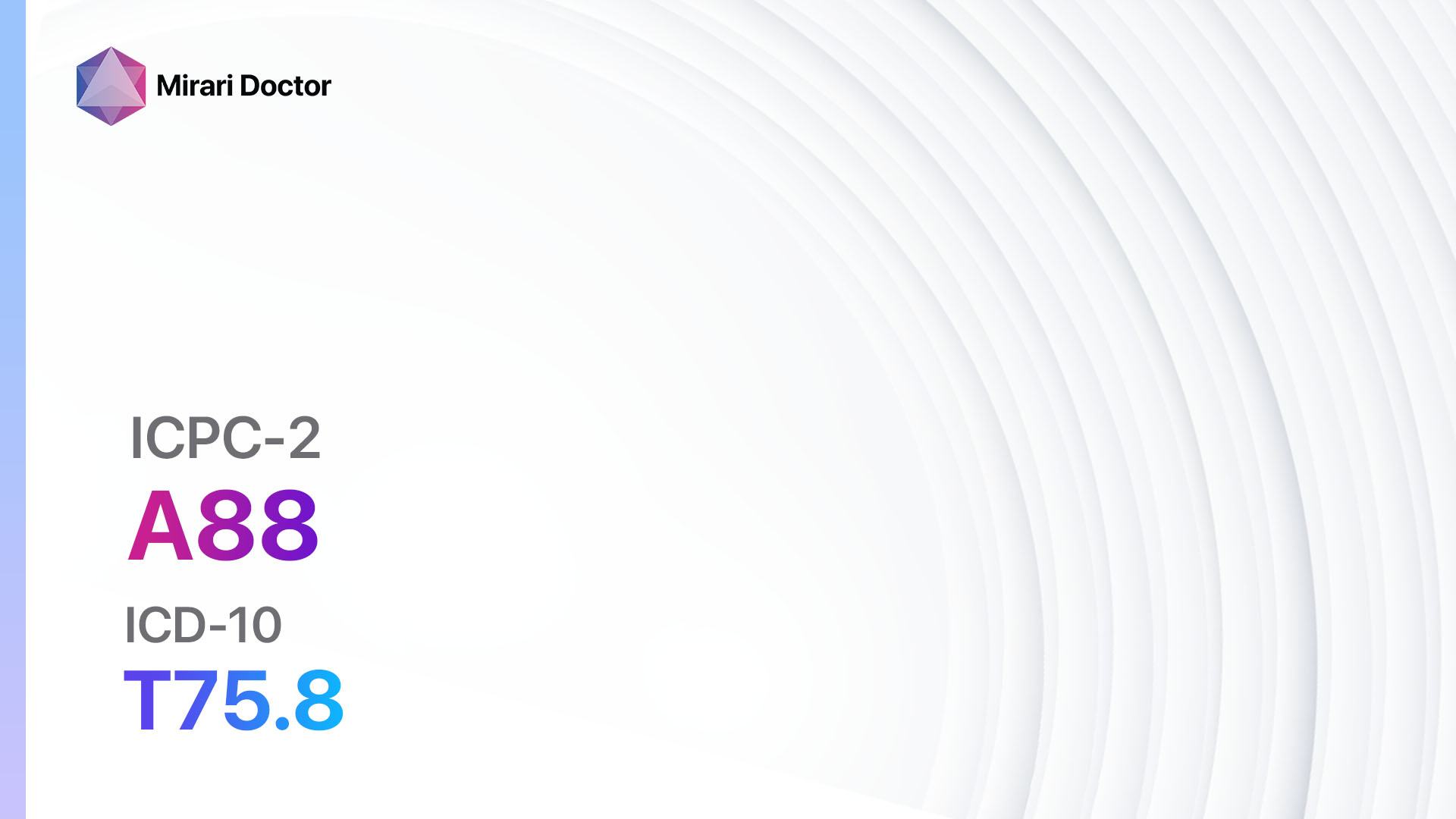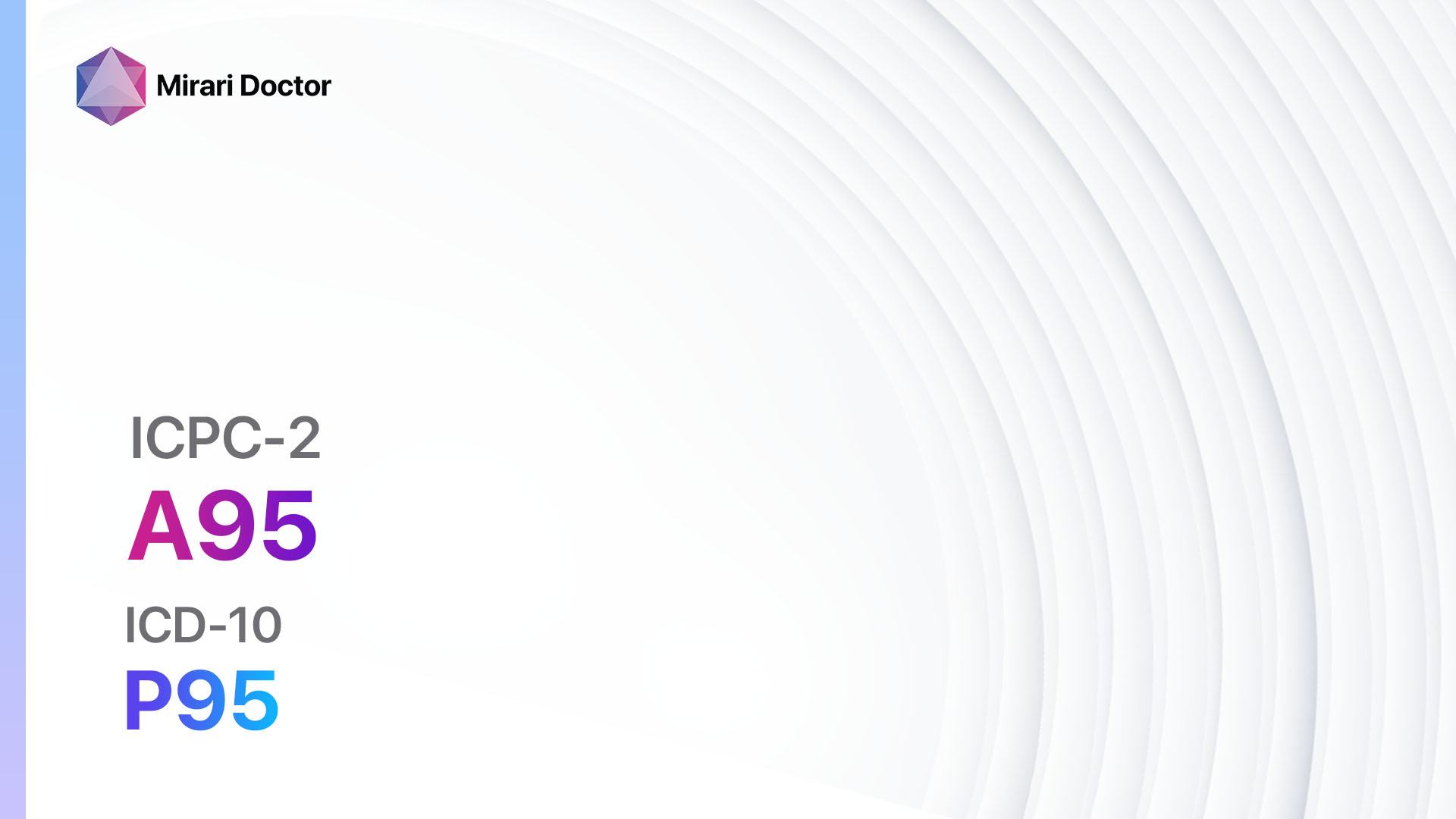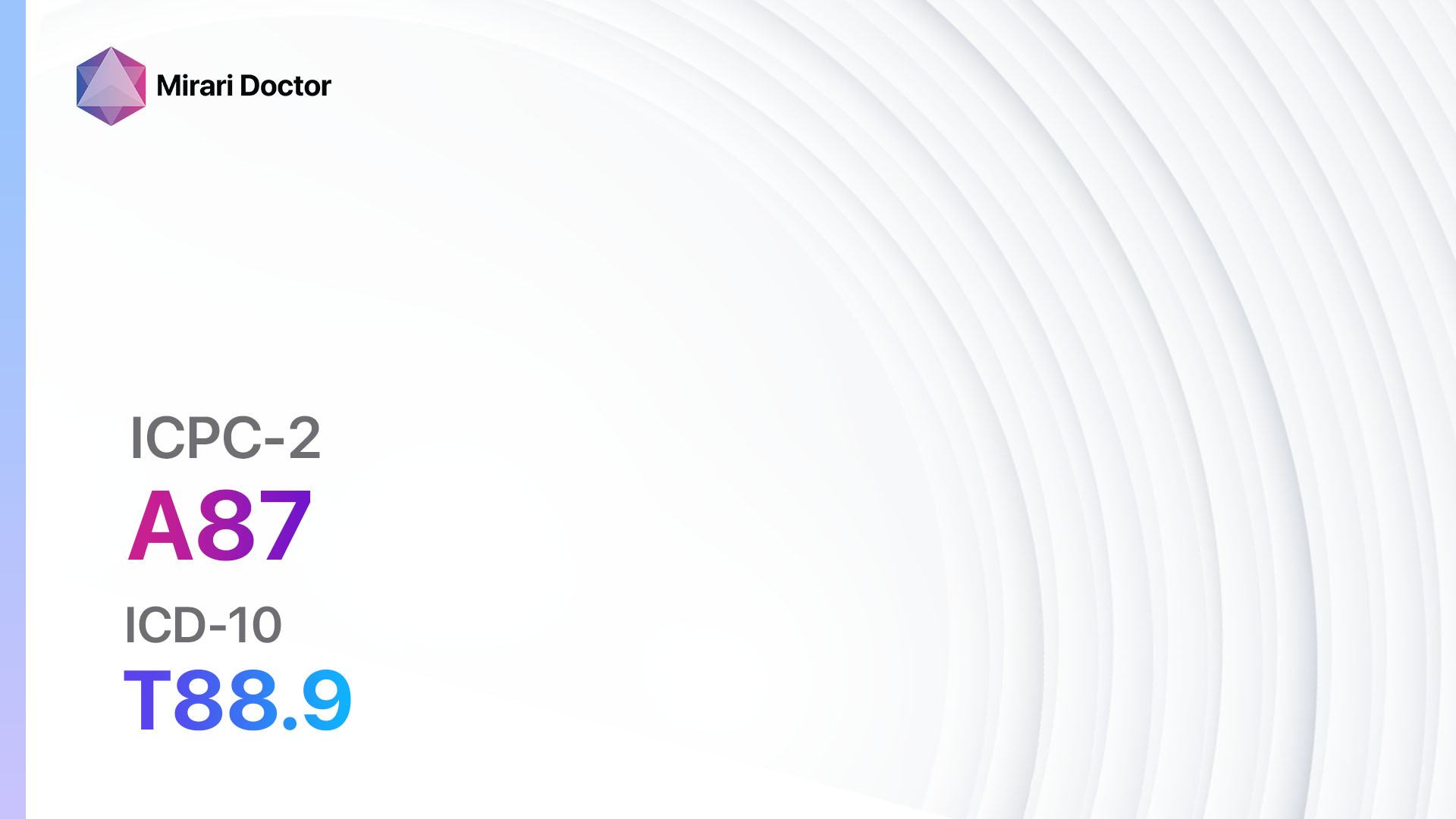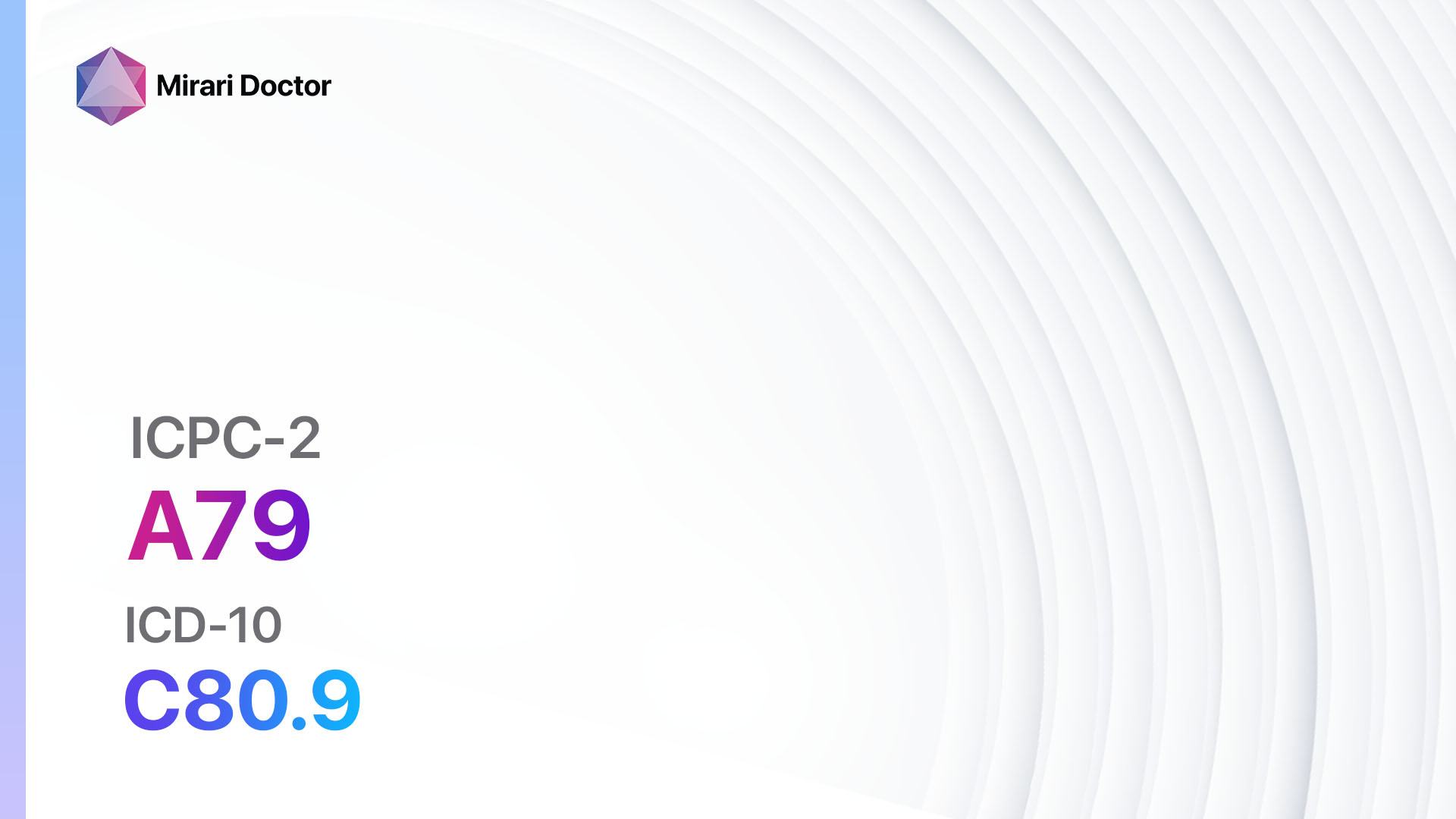
Introduction
Adverse effect physical factor refers to the negative impact that physical factors can have on an individual’s health[1]. These physical factors can include environmental conditions, occupational hazards, or exposure to certain substances[2]. The aim of this guide is to provide healthcare professionals with a comprehensive understanding of the symptoms, causes, diagnostic steps, possible interventions, and patient education related to adverse effect physical factor.
Codes
- ICPC-2 Code: A88 Adverse effect physical factor[3]
- ICD-10 Code: T75.8 Other specified effects of external causes[4]
Symptoms
- Fatigue: Feeling tired or lacking energy[5]
- Pain: Experiencing discomfort or soreness in specific areas of the body[5]
- Respiratory problems: Difficulty breathing or shortness of breath[5]
- Skin irritation: Itching, redness, or rashes on the skin[5]
- Digestive issues: Nausea, vomiting, or diarrhea[5]
- Neurological symptoms: Headaches, dizziness, or confusion[5]
- Musculoskeletal problems: Joint pain, muscle weakness, or stiffness[5]
- Sensory disturbances: Vision or hearing problems[5]
Causes
- Exposure to toxic substances: Chemicals, pollutants, or radiation[6]
- Physical trauma: Accidents, falls, or injuries[6]
- Extreme temperatures: Heatstroke, hypothermia, or frostbite[6]
- Noise pollution: Prolonged exposure to loud noises[6]
- Occupational hazards: Working with hazardous materials or in dangerous environments[6]
- Allergens: Reactions to certain substances or allergens[6]
Diagnostic Steps
Medical History
- Gather information about the patient’s occupation, hobbies, and living environment[7]
- Identify any previous exposure to toxic substances or physical trauma[7]
- Assess the patient’s symptoms and their relationship to specific physical factors[7]
Physical Examination
- Perform a thorough examination of the patient’s body, focusing on areas of pain or discomfort[8]
- Check for any visible signs of skin irritation or respiratory problems[8]
- Evaluate the patient’s neurological function and sensory responses[8]
Laboratory Tests
- Complete blood count (CBC): Assess for any abnormalities or signs of infection[9]
- Liver function tests: Determine if there is any liver damage or dysfunction[9]
- Allergy testing: Identify specific allergens that may be causing adverse effects[9]
- Urine analysis: Check for any abnormalities or signs of kidney dysfunction[9]
- Pulmonary function tests: Evaluate lung function and respiratory capacity[9]
Diagnostic Imaging
- X-rays: Identify any fractures, dislocations, or abnormalities in the bones[10]
- CT scans: Provide detailed images of internal organs, tissues, or structures[10]
- MRI scans: Assess soft tissues, blood vessels, or the central nervous system[10]
- Ultrasound: Visualize organs, blood flow, or abnormalities in real-time[10]
Other Tests
- Skin patch testing: Determine if the patient has any allergies or sensitivities to certain substances
- Occupational exposure assessment: Evaluate the patient’s workplace for potential hazards or risks
- Environmental testing: Assess the patient’s living environment for pollutants or toxins
Follow-up and Patient Education
- Schedule regular follow-up appointments to monitor the patient’s progress and response to interventions
- Educate the patient about potential triggers or physical factors to avoid
- Provide information on lifestyle modifications and self-care strategies to minimize adverse effects
Possible Interventions
Traditional Interventions
Medications:
Top 5 drugs for Adverse effect physical factor:
- Antihistamines (e.g., Loratadine, Cetirizine):
- Cost: Generic versions can be $5-$20/month.
- Contraindications: Hypersensitivity to antihistamines.
- Side effects: Drowsiness, dry mouth, dizziness.
- Severe side effects: Irregular heartbeat, difficulty breathing.
- Drug interactions: Sedatives, alcohol.
- Warning: May cause drowsiness, avoid driving or operating machinery.
- Corticosteroids (e.g., Prednisone, Dexamethasone):
- Cost: Generic versions can be $5-$50/month.
- Contraindications: Active infections, systemic fungal infections.
- Side effects: Increased appetite, weight gain, mood changes.
- Severe side effects: Adrenal insufficiency, osteoporosis.
- Drug interactions: Nonsteroidal anti-inflammatory drugs (NSAIDs), anticoagulants.
- Warning: Long-term use may require gradual tapering to avoid withdrawal symptoms.
- Bronchodilators (e.g., Albuterol, Salmeterol):
- Cost: Generic versions can be $10-$50/month.
- Contraindications: Hypersensitivity to bronchodilators.
- Side effects: Tremors, increased heart rate, headache.
- Severe side effects: Chest pain, irregular heartbeat.
- Drug interactions: Beta-blockers, diuretics.
- Warning: Should not be used as a rescue medication for acute asthma attacks.
- Pain relievers (e.g., Acetaminophen, Ibuprofen):
- Cost: Generic versions can be $3-$20/month.
- Contraindications: Allergy to pain relievers, active stomach ulcers.
- Side effects: Upset stomach, drowsiness, dizziness.
- Severe side effects: Liver damage, gastrointestinal bleeding.
- Drug interactions: Blood thinners, other pain relievers.
- Warning: Avoid exceeding the recommended dosage to prevent liver damage.
- Antiemetics (e.g., Ondansetron, Metoclopramide):
- Cost: Generic versions can be $10-$50/month.
- Contraindications: Hypersensitivity to antiemetics, intestinal obstruction.
- Side effects: Headache, constipation, dizziness.
- Severe side effects: Tardive dyskinesia, serotonin syndrome.
- Drug interactions: Serotonin reuptake inhibitors (SSRIs), dopamine antagonists.
- Warning: Use caution in patients with a history of movement disorders.
Alternative Drugs:
- Immunosuppressants (e.g., Cyclosporine): Used for severe allergic reactions or autoimmune conditions.
- Mast cell stabilizers (e.g., Cromolyn sodium): Prevent the release of histamine and other inflammatory substances.
- Leukotriene modifiers (e.g., Montelukast): Reduce inflammation and improve respiratory symptoms.
- Topical corticosteroids (e.g., Hydrocortisone cream): Relieve skin irritation and inflammation.
- Antidepressants (e.g., Amitriptyline): Can help manage chronic pain and improve mood.
Surgical Procedures:
- Debridement: Removal of damaged or infected tissue to promote healing. Cost: $500-$2,000.
- Skin grafting: Transplantation of healthy skin to replace damaged or lost skin. Cost: $5,000-$15,000.
- Joint replacement: Surgical removal and replacement of damaged joints. Cost: $20,000-$50,000.
- Nerve decompression: Relieves pressure on compressed nerves to alleviate pain. Cost: $5,000-$15,000.
- Excision of tumors or lesions: Surgical removal of abnormal growths. Cost: $1,000-$10,000.
Alternative Interventions
- Acupuncture: May help alleviate pain and promote relaxation. Cost: $60-$120 per session.
- Chiropractic care: Manipulation of the spine to improve musculoskeletal health. Cost: $50-$200 per session.
- Massage therapy: Relieves muscle tension and promotes circulation. Cost: $50-$100 per session.
- Herbal supplements: Some herbs, such as turmeric or ginger, have anti-inflammatory properties. Cost: Varies depending on the specific supplement.
- Physical therapy: Exercises and techniques to improve mobility and reduce pain. Cost: $50-$150 per session.
Lifestyle Interventions
- Avoidance of triggers: Identify and avoid specific physical factors that cause adverse effects.
- Healthy diet: Consume a balanced diet rich in fruits, vegetables, and whole grains.
- Regular exercise: Engage in moderate physical activity to improve overall health and reduce symptoms.
- Stress management: Practice relaxation techniques, such as deep breathing or meditation.
- Environmental modifications: Make changes to the living or working environment to minimize exposure to physical factors.
It is important to note that the cost ranges provided are approximate and may vary depending on the location and availability of the interventions.
Mirari Cold Plasma Alternative Intervention
Understanding Mirari Cold Plasma
- Safe and Non-Invasive Treatment: Mirari Cold Plasma is a safe and non-invasive treatment option for various skin conditions. It does not require incisions, minimizing the risk of scarring, bleeding, or tissue damage.
- Efficient Extraction of Foreign Bodies: Mirari Cold Plasma facilitates the removal of foreign bodies from the skin by degrading and dissociating organic matter, allowing easier access and extraction.
- Pain Reduction and Comfort: Mirari Cold Plasma has a local analgesic effect, providing pain relief during the treatment, making it more comfortable for the patient.
- Reduced Risk of Infection: Mirari Cold Plasma has antimicrobial properties, effectively killing bacteria and reducing the risk of infection.
- Accelerated Healing and Minimal Scarring: Mirari Cold Plasma stimulates wound healing and tissue regeneration, reducing healing time and minimizing the formation of scars.
Mirari Cold Plasma Prescription
Video instructions for using Mirari Cold Plasma Device – A88 Adverse effect physical factor (ICD-10:T75.8)
| Mild | Moderate | Severe |
| Mode setting: 1 (Infection) Location: 0 (Localized) Morning: 15 minutes, Evening: 15 minutes |
Mode setting: 1 (Infection) Location: 0 (Localized) Morning: 30 minutes, Lunch: 30 minutes, Evening: 30 minutes |
Mode setting: 1 (Infection) Location: 0 (Localized) Morning: 30 minutes, Lunch: 30 minutes, Evening: 30 minutes |
| Mode setting: 7 (Immunotherapy) Location: 1 (Sacrum) Morning: 15 minutes, Evening: 15 minutes |
Mode setting: 7 (Immunotherapy) Location: 1 (Sacrum) Morning: 30 minutes, Lunch: 30 minutes, Evening: 30 minutes |
Mode setting: 7 (Immunotherapy) Location: 1 (Sacrum) Morning: 30 minutes, Lunch: 30 minutes, Evening: 30 minutes |
| Mode setting: 7 (Immunotherapy) Location: 4 (Heart, Bile & Pancreas) Morning: 15 minutes, Evening: 15 minutes |
Mode setting: 7 (Immunotherapy) Location: 4 (Heart, Bile & Pancreas) Morning: 30 minutes, Lunch: 30 minutes, Evening: 30 minutes |
Mode setting: 7 (Immunotherapy) Location: 4 (Heart, Bile & Pancreas) Morning: 30 minutes, Lunch: 30 minutes, Evening: 30 minutes |
| Mode setting: 7 (Immunotherapy) Location: 7 (Neuro system & ENT) Morning: 15 minutes, Evening: 15 minutes |
Mode setting: 7 (Immunotherapy) Location: 7 (Neuro system & ENT) Morning: 30 minutes, Lunch: 30 minutes, Evening: 30 minutes |
Mode setting: 7 (Immunotherapy) Location: 7 (Neuro system & ENT) Morning: 30 minutes, Lunch: 30 minutes, Evening: 30 minutes |
| Total Morning: 60 minutes approx. $10 USD, Evening: 60 minutes approx. $10 USD |
Total Morning: 120 minutes approx. $20 USD, Lunch: 120 minutes approx. $20 USD, Evening: 120 minutes approx. $20 USD, |
Total Morning: 120 minutes approx. $20 USD, Lunch: 120 minutes approx. $20 USD, Evening: 120 minutes approx. $20 USD, |
| Usual treatment for 7-60 days approx. $140 USD – $1200 USD | Usual treatment for 6-8 weeks approx. $2,520 USD – $3,360 USD |
Usual treatment for 3-6 months approx. $5,400 USD – $10,800 USD
|
 |
|
Use the Mirari Cold Plasma device to treat Adverse effect physical factor effectively.
WARNING: MIRARI COLD PLASMA IS DESIGNED FOR THE HUMAN BODY WITHOUT ANY ARTIFICIAL OR THIRD PARTY PRODUCTS. USE OF OTHER PRODUCTS IN COMBINATION WITH MIRARI COLD PLASMA MAY CAUSE UNPREDICTABLE EFFECTS, HARM OR INJURY. PLEASE CONSULT A MEDICAL PROFESSIONAL BEFORE COMBINING ANY OTHER PRODUCTS WITH USE OF MIRARI.
Step 1: Cleanse the Skin
- Start by cleaning the affected area of the skin with a gentle cleanser or mild soap and water. Gently pat the area dry with a clean towel.
Step 2: Prepare the Mirari Cold Plasma device
- Ensure that the Mirari Cold Plasma device is fully charged or has fresh batteries as per the manufacturer’s instructions. Make sure the device is clean and in good working condition.
- Switch on the Mirari device using the power button or by following the specific instructions provided with the device.
- Some Mirari devices may have adjustable settings for intensity or treatment duration. Follow the manufacturer’s instructions to select the appropriate settings based on your needs and the recommended guidelines.
Step 3: Apply the Device
- Place the Mirari device in direct contact with the affected area of the skin. Gently glide or hold the device over the skin surface, ensuring even coverage of the area experiencing.
- Slowly move the Mirari device in a circular motion or follow a specific pattern as indicated in the user manual. This helps ensure thorough treatment coverage.
Step 4: Monitor and Assess:
- Keep track of your progress and evaluate the effectiveness of the Mirari device in managing your Adverse effect physical factor. If you have any concerns or notice any adverse reactions, consult with your health care professional.
Note
This guide is for informational purposes only and should not replace the advice of a medical professional. Always consult with your healthcare provider or a qualified medical professional for personal advice, diagnosis, or treatment. Do not solely rely on the information presented here for decisions about your health. Use of this information is at your own risk. The authors of this guide, nor any associated entities or platforms, are not responsible for any potential adverse effects or outcomes based on the content.
Mirari Cold Plasma System Disclaimer
- Purpose: The Mirari Cold Plasma System is a Class 2 medical device designed for use by trained healthcare professionals. It is registered for use in Thailand and Vietnam. It is not intended for use outside of these locations.
- Informational Use: The content and information provided with the device are for educational and informational purposes only. They are not a substitute for professional medical advice or care.
- Variable Outcomes: While the device is approved for specific uses, individual outcomes can differ. We do not assert or guarantee specific medical outcomes.
- Consultation: Prior to utilizing the device or making decisions based on its content, it is essential to consult with a Certified Mirari Tele-Therapist and your medical healthcare provider regarding specific protocols.
- Liability: By using this device, users are acknowledging and accepting all potential risks. Neither the manufacturer nor the distributor will be held accountable for any adverse reactions, injuries, or damages stemming from its use.
- Geographical Availability: This device has received approval for designated purposes by the Thai and Vietnam FDA. As of now, outside of Thailand and Vietnam, the Mirari Cold Plasma System is not available for purchase or use.
References
- Farahani, M. A., Mohammadi, E., Ahmadi, F., & Mohammadi, N. (2013). Factors influencing the patient education: A qualitative research. Iranian journal of nursing and midwifery research, 18(2), 133–139.
- Alomar M. J. (2014). Factors affecting the development of adverse drug reactions (Review article). Saudi pharmaceutical journal : SPJ : the official publication of the Saudi Pharmaceutical Society, 22(2), 83–94. https://doi.org/10.1016/j.jsps.2013.02.003
- WONCA International Classification Committee. (1998). ICPC-2: International classification of primary care. Oxford University Press, USA.
- World Health Organization. (2015). International statistical classification of diseases and related health problems (10th ed.).
- Schatz, S. N., & Weber, R. J. (2015). Adverse drug reactions. ACCP Updates in Therapeutics, 1-13.
- Hoffman, R. S., Howland, M. A., Lewin, N. A., Nelson, L. S., & Goldfrank, L. R. (Eds.). (2014). Goldfrank’s toxicologic emergencies (10th ed.). McGraw-Hill Education.
- Bickley, L. S. (2017). Bates’ guide to physical examination and history taking (12th ed.). Wolters Kluwer.
- Jarvis, C. (2020). Physical examination and health assessment (8th ed.). Elsevier.
- Pagana, K. D., Pagana, T. J., & Pagana, T. N. (2019). Mosby’s diagnostic and laboratory test reference (14th ed.). Elsevier.
- Eisenberg, R. L. (2019). Clinical imaging: An atlas of differential diagnosis (6th ed.). Wolters Kluwer.
Related articles
Made in USA



























